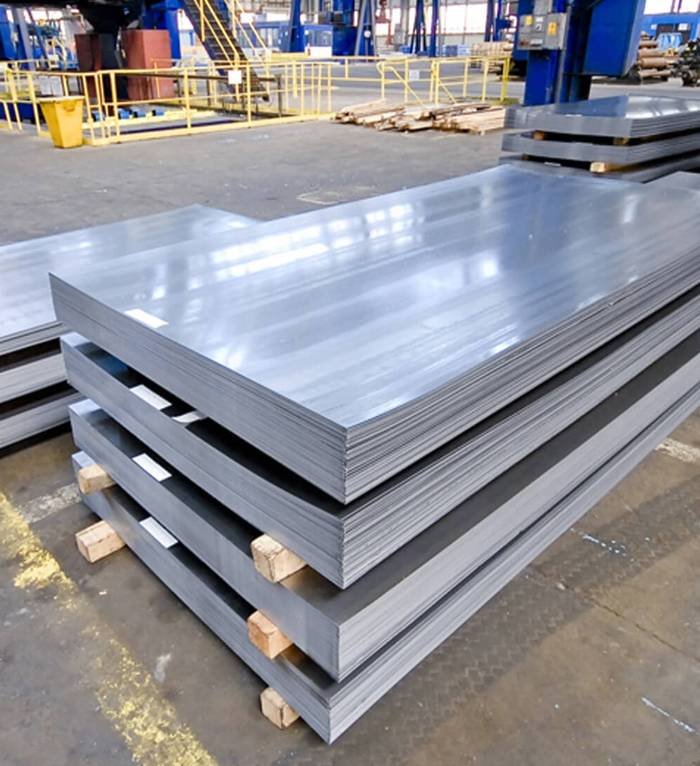Steel is an essential material in numerous industries, from construction and manufacturing to automotive and aerospace. Among the various forms of steel, sheets and plates are two common products often used interchangeably, yet they serve distinct purposes and possess unique characteristics. Understanding the differences between steel sheets and plates is crucial for selecting the right material for your project.
Definition and Basic Differences

Steel Sheet
Steel Sheet: A steel sheet is a flat piece of steel that is typically less than 6mm thick. Sheets are often used in applications where a smooth, thin surface is required, such as automotive panels, appliances, and roofing materials.

Steel Plate
Steel Plate: A steel plate, on the other hand, is generally thicker than 6mm and can be up to several inches thick. Plates are used in situations that require higher strength and durability, such as in the construction of bridges, buildings, ships, and heavy machinery.
Manufacturing Processes
The production processes for steel sheets and plates are similar but tailored to meet the specific requirements of each product:
- Hot Rolling: Both steel sheets and plates can be produced through hot rolling, where the steel is heated above its recrystallization temperature and rolled into the desired thickness. Hot-rolled steel typically has a rougher surface and is less precise in terms of dimensions.
- Cold Rolling: Steel sheets are often further processed through cold rolling, which involves rolling the steel at room temperature. This process provides a smoother finish, tighter tolerances, and increased strength due to work hardening. Cold-rolled steel is typically used for applications requiring a high-quality surface and precise dimensions.
- Cutting and Finishing: After rolling, both sheets and plates can be cut to size and undergo various finishing processes, such as annealing, pickling, and coating, to enhance their properties and appearance.
Applications
Steel Sheets:
- Automotive Industry: Used for car bodies, panels, and other components due to their smooth surface and formability.
- Construction: Employed in roofing, cladding, and decorative elements.
- Consumer Goods: Utilized in the production of appliances, electronics, and furniture.
Steel Plates:
- Construction and Infrastructure: Essential for building foundations, bridges, and structural components that require high strength and durability.
- Shipbuilding: Used in the construction of ship hulls and other marine structures due to their ability to withstand harsh environments.
- Machinery and Heavy Equipment: Integral in the manufacturing of heavy-duty machinery, industrial equipment, and pressure vessels.
Properties and Characteristics
Thickness and Strength: The primary difference between sheets and plates is their thickness. Plates are thicker and therefore stronger and more rigid, making them suitable for heavy-duty applications. Sheets are thinner, more flexible, and easier to cut and form.
Surface Finish: Sheets often have a smoother surface due to cold rolling and finishing processes, making them ideal for applications where appearance is important. Plates typically have a rougher surface as they are usually hot-rolled and used in structural applications where surface finish is less critical.
Weight and Handling: Steel sheets are lighter and easier to handle than plates, which can be quite heavy and require specialized equipment for transportation and installation.
Selecting the Right Material
Choosing between steel sheets and plates depends on the specific requirements of your project:
- For Structural Applications: If strength, rigidity, and load-bearing capacity are paramount, steel plates are the preferred choice.
- For Precision and Appearance: When a smooth finish, precise dimensions, and formability are important, steel sheets are the better option.
- For Cost Considerations: Sheets are generally less expensive than plates due to their thinner profile and reduced material usage.
Conclusion
Understanding the differences between steel sheets and plates is crucial for selecting the right material for your project. While both products are made from steel, their thickness, strength, surface finish, and applications vary significantly. By considering the specific requirements of your project, you can make an informed decision and ensure the success and longevity of your construction, manufacturing, or industrial endeavors.


